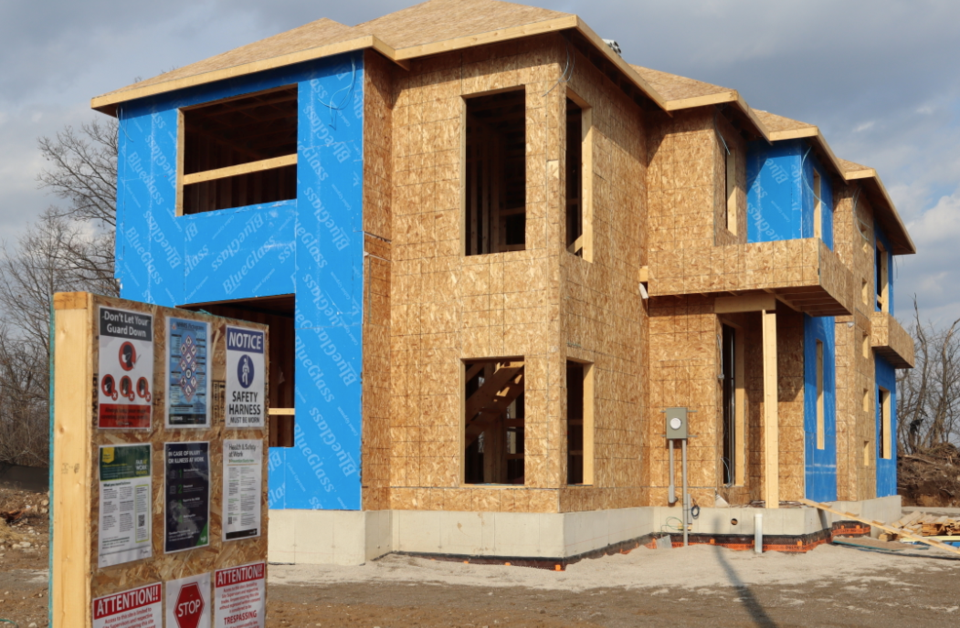GuelphToday received the following letter from Tom McLaughlan, vice-president of Thomasfield Homes and a member of the Guelph & District Home Builders Association about the need for federal support during the housing affordability crisis and infrastructure investment.
As a local homebuilder and past president of the Guelph & District Home Builders Association, I have witnessed first hand the challenges our community faces in tackling the housing affordability crisis that has plagued Ontario since the late 2000s. With home affordability decreasing, it is clear that a multi-faceted approach is required to address this pressing issue.
A recent study by The Canadian Centre for Economic Analysis (CANCEA), titled Will Feds Answer the Call? Infrastructure Investment Lags Amidst Highly Taxed Housing Construction, highlights the critical need for increased federal government involvement in funding public infrastructure investment to support growth and ease the housing affordability problem in Ontario. The lack of support has arguably been a catalyst for the worst housing affordability crisis in Ontario's history. Furthermore, it hinders population growth and economic development, making it increasingly difficult to construct new homes. The CANCEA study had the following findings:
Ontario's aging population necessitates growth, which relies heavily on immigration. Without it, the number of dependents would increase by four per cent by 2050, and the province would have the same number of non-government workers as it had in 2008. The construction of new homes is crucial to support population growth, but Ontario's ability to build new homes has decreased. Since the 1970s, the population has grown by six per cent, while the number of annual new housing completions has dropped by 23 per cent.
Public infrastructure investment funding with a focus on infrastructure investments, including water, wastewater, roads, transit, and supportive housing, is essential for supporting growth trends. It’s currently below the necessary levels. Additionally, taxes on new housing have significantly increased, now accounting for 31 per cent of a new home's purchase price in Ontario — twice that of the rest of the economy. The government, as the largest beneficiary of a new home's construction, accounts for 31% of the purchase price, three times more than the average profit for residential construction builders and their trades and sub-trades.
The federal government, enjoying a 39 per cent share of the 31 per cent tax burden on a new home, contributes only 7.1 per cent of the public infrastructure investment required for Ontario's growth. The current level of federal investment in public infrastructure in Ontario appears to be imbalanced compared to the benefits it receives from housing development. This puts the provincial government and the local governments of Ontario in a difficult position, as the taxation revenues from building new homes are not allocated proportionately to those responsible for the required public infrastructure investment to support such growth.
While Ontario faces an unprecedented housing affordability crisis, the federal government's recent proclamation of a 55 per cent increase in immigration on pre-pandemic levels highlights the lack of understanding of the housing crisis on the ground, and the fiscal and public investment imbalances that exist due to federal government policy. The uncomfortable contradiction is that the federal government's immigration policies aim to drive growth in Ontario, but it does not provide enough funding from the benefits of that growth to allow the province to grow.
As a local homebuilder and advocate for our industry, I believe it is crucial for us to be involved in policy decisions surrounding housing affordability, infrastructure investment, and taxation. By working collaboratively with all levels of government, we can devise innovative solutions to address the housing crisis, support population growth, and ensure Ontario's long-term economic sustainability.
The federal government must recognize the importance of homebuilders and the construction industry in addressing the housing affordability crisis. By involving us in policy decisions and acknowledging our industry's role in creating new homes, jobs, and economic growth, we can contribute valuable insights and expertise to develop effective strategies.
To promote sustainable economic growth in Ontario, the federal government must address this imbalance by increasing its involvement in funding relevant public infrastructure investment. Additionally, it should reconsider the way it taxes new housing construction, with a focus on reducing the tax burden on new home buyers and reevaluating the distribution of taxation revenues from new home construction.
Addressing Ontario's housing affordability crisis requires a collaborative effort from all levels of government and the active involvement of the homebuilding industry. A more equitable distribution of resources and increased federal investment in public infrastructure will support population growth, economic development, and ultimately improve the quality of life for residents. As members of the community, we must advocate for a balanced approach and work together to ensure a sustainable and prosperous future for Ontario and Canada as a whole.
Tom McLaughlan, vice-president, Thomasfield Homes Ltd.; GDHBA board member



